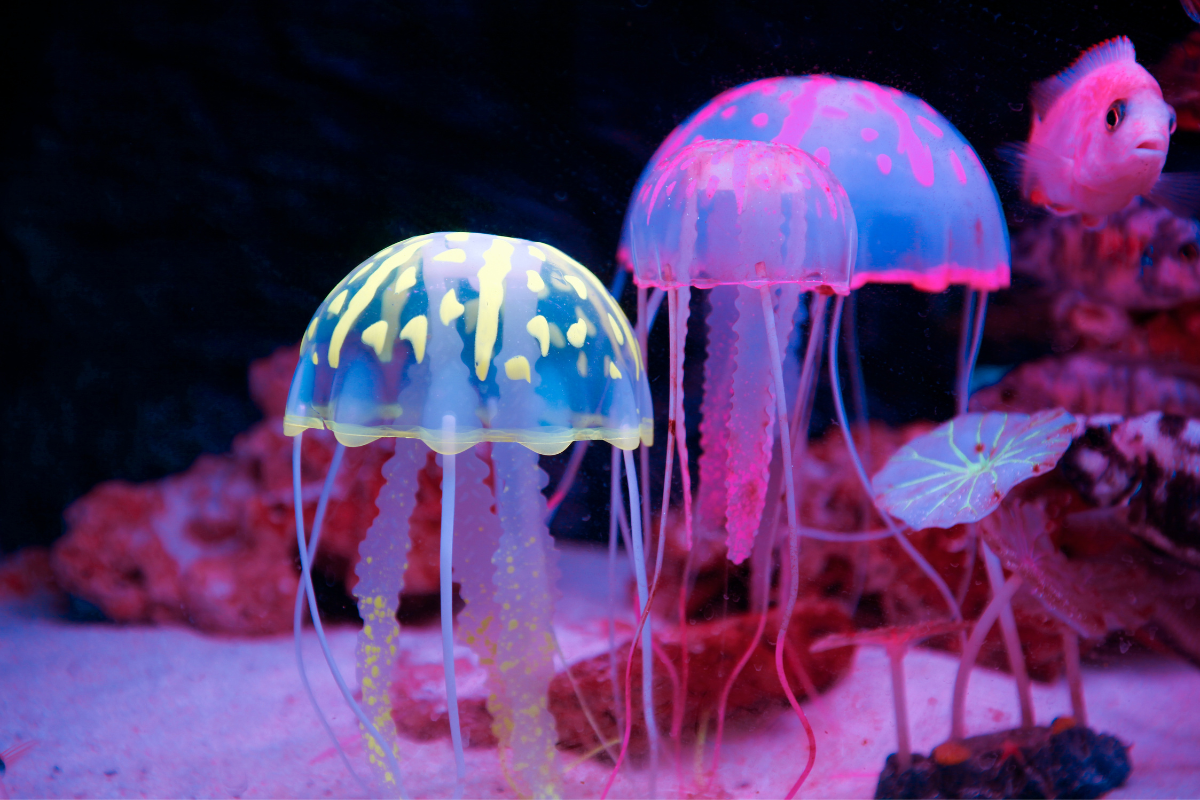
Aquatic Marvels: The Coolest Creatures Living in Earth's Oceans
The ocean depths hold a realm of wonders, a mysterious and enchanting world where beauty takes on forms both strange and captivating. Deep-sea creatures, hidden from the sun's rays in the vast expanse of darkness, are adorned with colors more vibrant than any rainbow and shapes more intricate than the most delicate lace. From the iridescent glow of bioluminescent organisms to the graceful movements of majestic giants, the deep sea is home to some of the most stunning creatures on Earth. Join us as we embark on a journey to explore the beauty that lies beneath the surface of the ocean, where every dive reveals a new marvel waiting to be discovered.
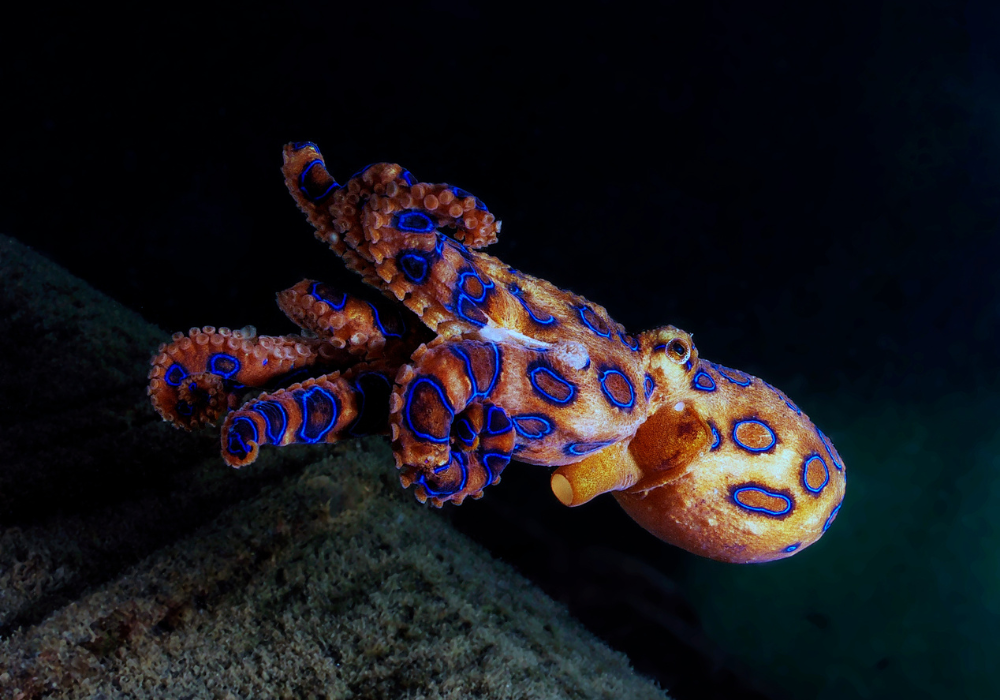
Blue-ringed Octopus
Despite its diminutive size, the blue-ringed octopus is a small cephalopod that is considered one of the most venomous marine animals in the world. It boasts striking iridescent blue rings across its body when agitated or threatened. These rings serve as a warning sign to potential predators of its potent venom. While normally docile, when provoked, the blue-ringed octopus can deliver a neurotoxin powerful enough to paralyze and potentially kill a human.
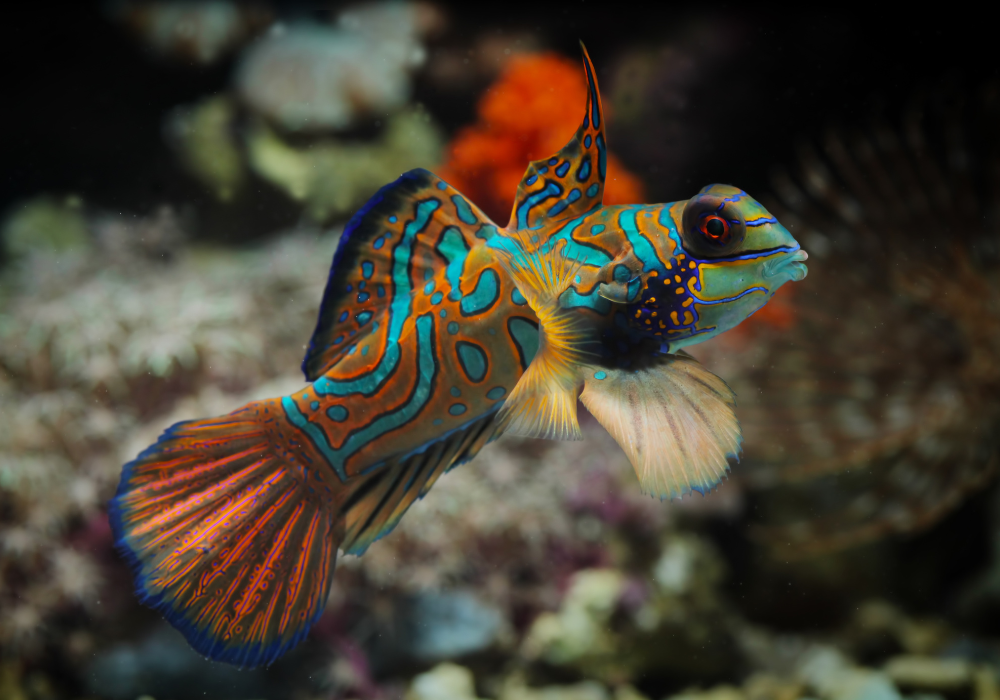
Mandarinfish
The mandarinfish, also known as the mandarin dragonet or Synchiropus splendidus, is a small, brightly colored fish native to the tropical waters of the Indo-Pacific region. It is renowned for its striking appearance, characterized by vibrant hues of blue, orange, green, and yellow, arranged in intricate patterns across its body. Mandarin fish have flattened bodies and elongated fins, giving them a distinctive profile. They are often found darting among coral reefs, where they seek refuge in crevices and feed on small crustaceans and zooplankton.
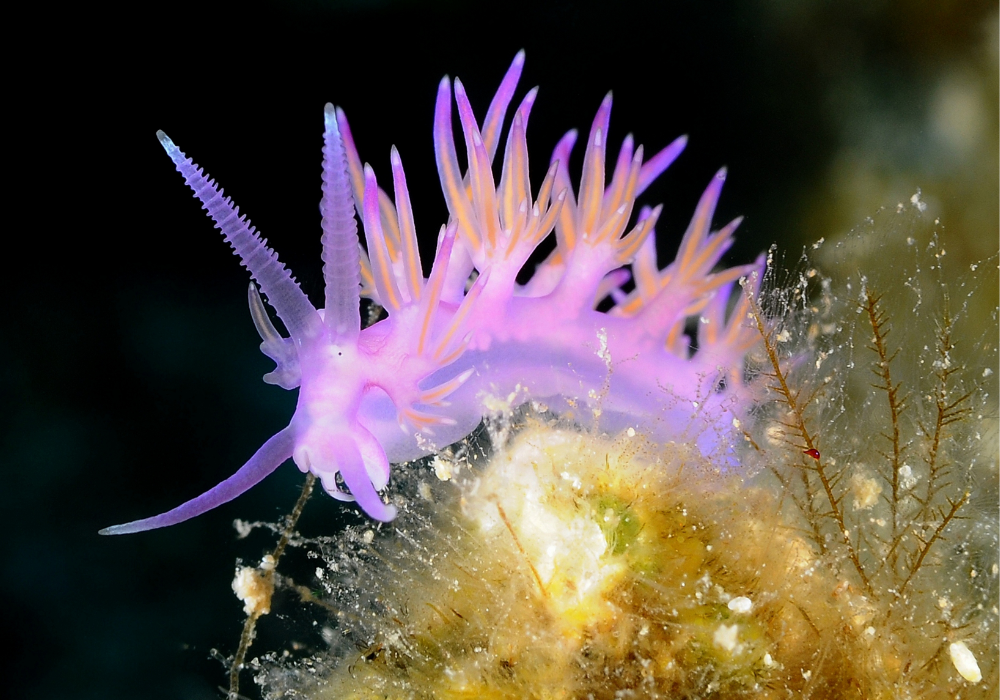
Sea Slug
Sea slugs or nudibranchs are a group of soft-bodied marine gastropod mollusks known for their striking colors and intricate patterns. They are found in oceans worldwide, from shallow tropical reefs to deep-sea environments. Nudibranchs lack a protective shell, exposing their vibrant colors and often bizarre shapes to predators. They come in a vast array of colors, including bright oranges, yellows, blues, purples, and more, often with intricate patterns or appendages that serve as camouflage or warning signals. Nudibranchs are carnivorous and feed on a variety of prey, including sponges, cnidarians, and other nudibranchs.
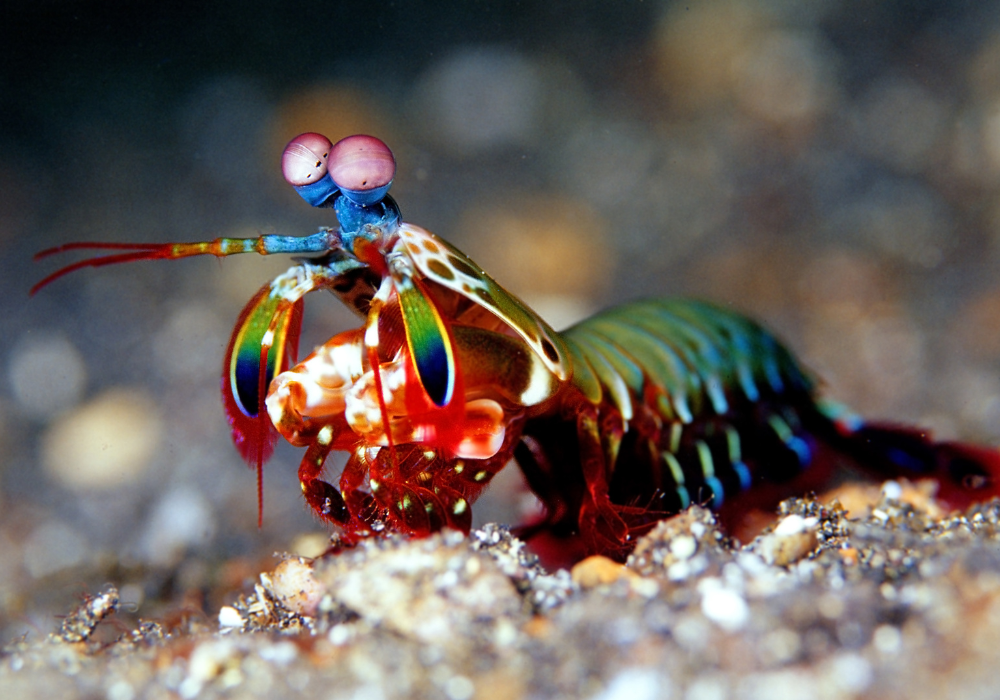
Peacock Mantis Shrimp
The peacock mantis shrimp, also known as Harlequin mantis shrimp or painted mantis shrimp, is a fascinating marine crustacean renowned for its striking colors and remarkable hunting abilities. Peacock mantis shrimp have elongated, segmented bodies with bulging eyes mounted on stalks, resembling a praying mantis, hence their name. They exhibit a vibrant array of colors, including shades of green, blue, orange, and red, often with intricate patterns. Despite their small size, typically ranging from a few centimeters to a few inches in length, peacock mantis shrimp possess one of the fastest and most powerful punches in the animal kingdom. They use specialized raptorial appendages, called dactyl clubs, to strike prey with incredible speed and force, capable of breaking through the hard shells of crustaceans and mollusks with ease.
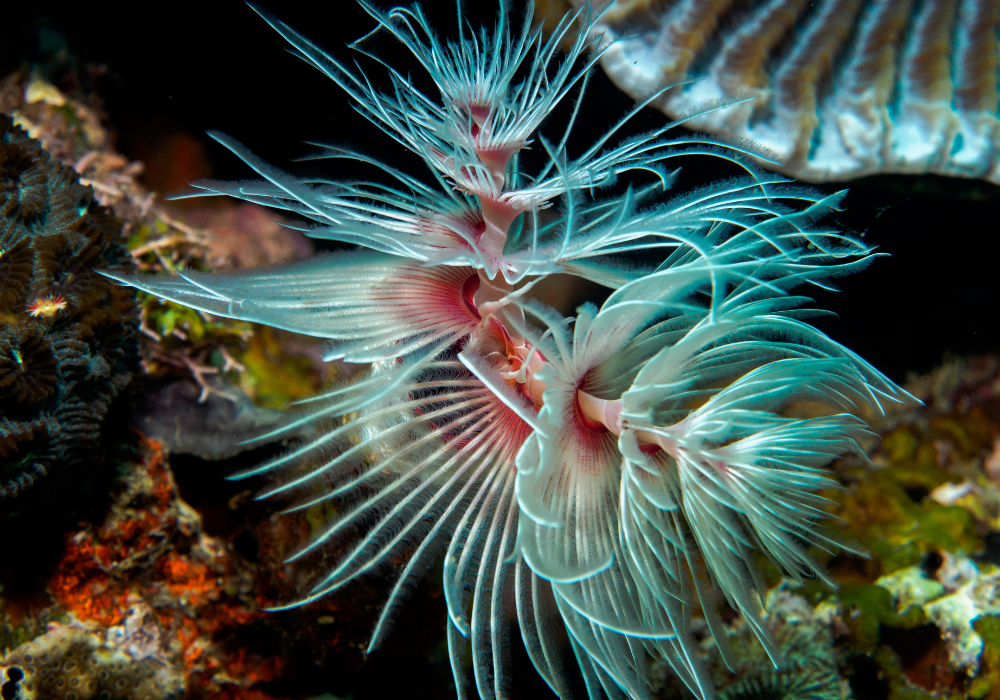
Christmas Tree Worm
The Christmas tree worm is a colorful marine worm found in tropical coral reef environments worldwide. Named for its distinctive appearance, the Christmas tree worm has a tube-like body that it anchors into coral substrates, with two spiral-shaped crowns protruding from its tube. These crowns are adorned with feathery tentacles arranged in a Christmas tree-like pattern, hence the name. The tentacles come in a variety of vibrant colors, including red, yellow, orange, blue, and white, making the Christmas tree worm a visually striking creature. The worm uses its tentacles to filter feed on plankton and microscopic organisms from the surrounding water.
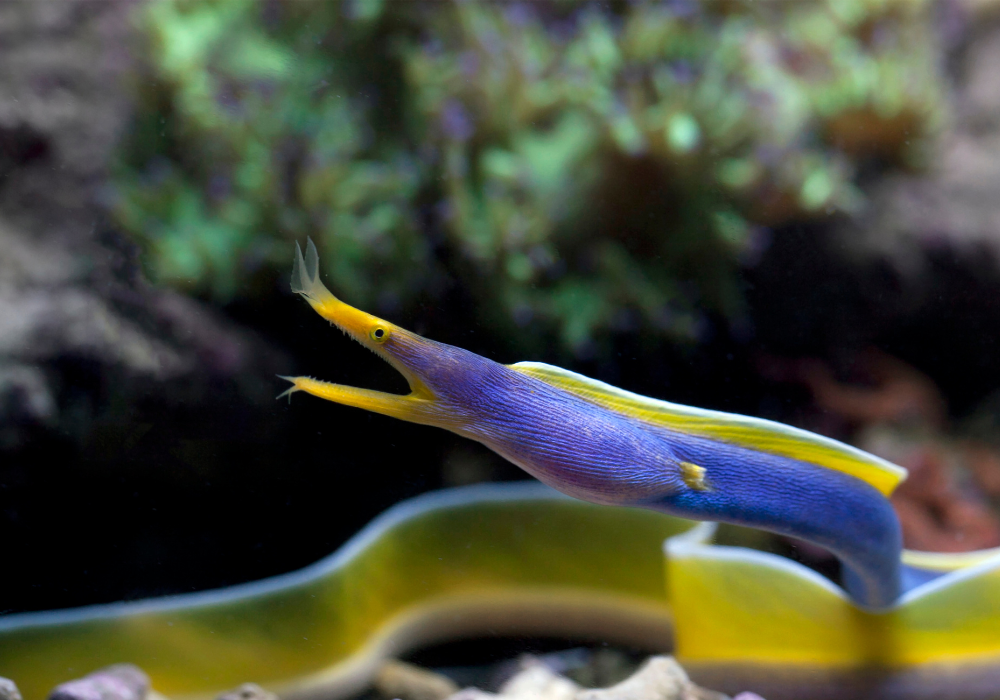
Ribbon Eel
The ribbon eel, also known as the ribbon moray or leaf-nosed moray, is a species of moray eel found in the tropical waters of the Indo-Pacific region. It is characterized by its long, slender body and distinctive ribbon-like shape. Ribbon eels display striking coloration, with juveniles typically sporting bright blue bodies and adults transitioning to blue with yellow dorsal fins and faces. As they mature, some individuals develop black coloring on their bodies. These eels are often found residing in sandy or muddy bottoms near coral reefs, where they hunt for small fish and crustaceans. Despite their intimidating appearance, ribbon eels are generally shy and non-aggressive towards humans unless provoked. They have the ability to retreat into crevices or burrows for protection if threatened. Ribbon eels are protandrous hermaphrodites, meaning they start life as males and may transition to females later in life.
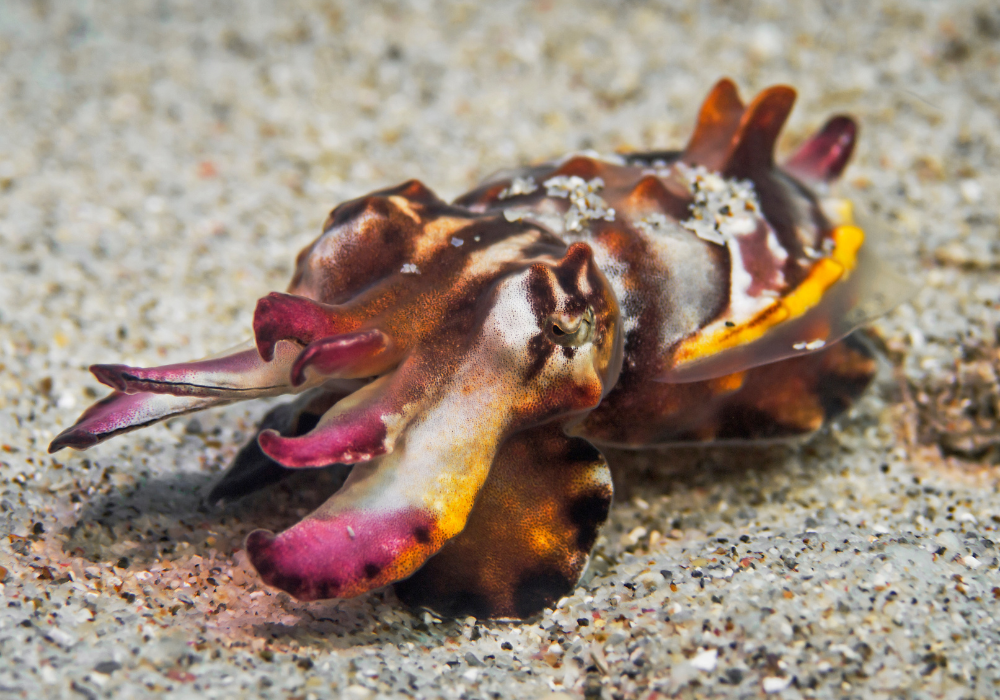
Flamboyant Cuttlefish
The flamboyant cuttlefish is a small and brightly colored cephalopod found in the tropical waters of the Indo-Pacific region, particularly around Australia, Indonesia, and the Philippines. Unlike other cuttlefish species, the flamboyant cuttlefish exhibits a remarkable display of vibrant colors, including shades of red, orange, pink, purple, and yellow. Its vivid coloration serves as a warning to potential predators, indicating its toxicity. The flamboyant cuttlefish is unique among cephalopods in that it walks along the seafloor using its tentacles, rather than swimming, which adds to its charming and quirky behavior. Despite its small size, usually no more than 8 to 10 centimeters in length, the flamboyant cuttlefish possesses highly developed chromatophores, specialized cells that allow it to rapidly change color and texture for camouflage and communication. It preys upon small crustaceans and fish, using its tentacles to capture prey with lightning-fast strikes. While visually stunning, the flamboyant cuttlefish is also highly venomous, containing toxic compounds that can be harmful to predators and humans alike.
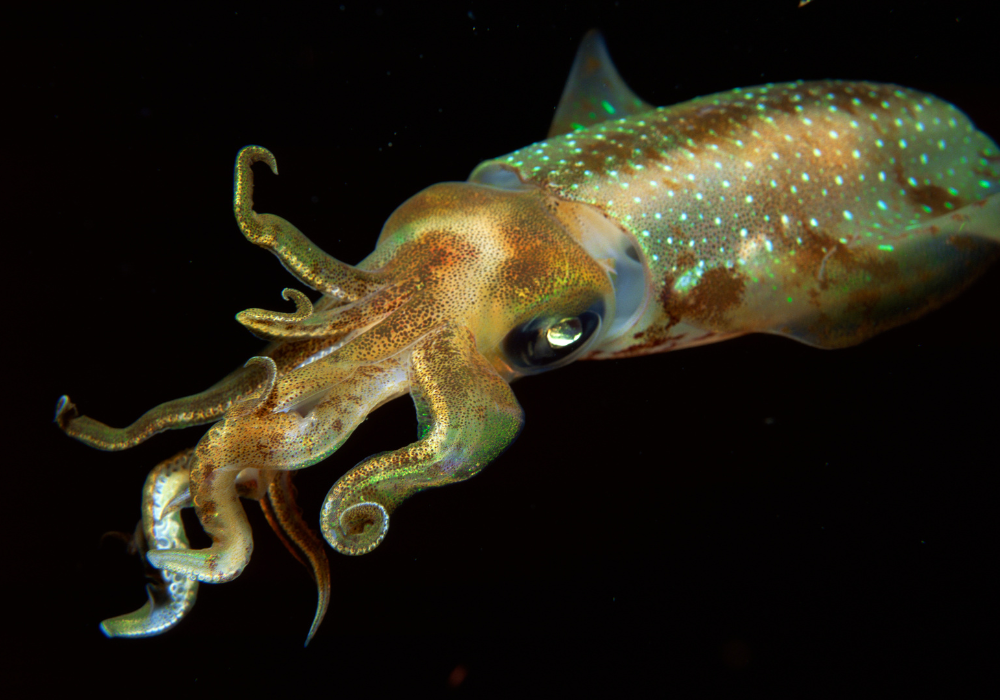
Firefly Squid
The firefly squid, scientifically known as Watasenia scintillans, is a fascinating bioluminescent cephalopod found in the western Pacific Ocean, particularly off the coast of Japan. These small squid, typically measuring around 3 inches (8 centimeters) in length, are known for their striking blue bioluminescence, which they produce through specialized light-emitting organs called photophores. The bioluminescent display is used for communication, camouflage, and attracting prey in the dark depths of the ocean. Firefly squid undertake nightly vertical migrations, ascending to shallow waters near the surface at night to feed on plankton and descending to deeper waters during the day to avoid predators.
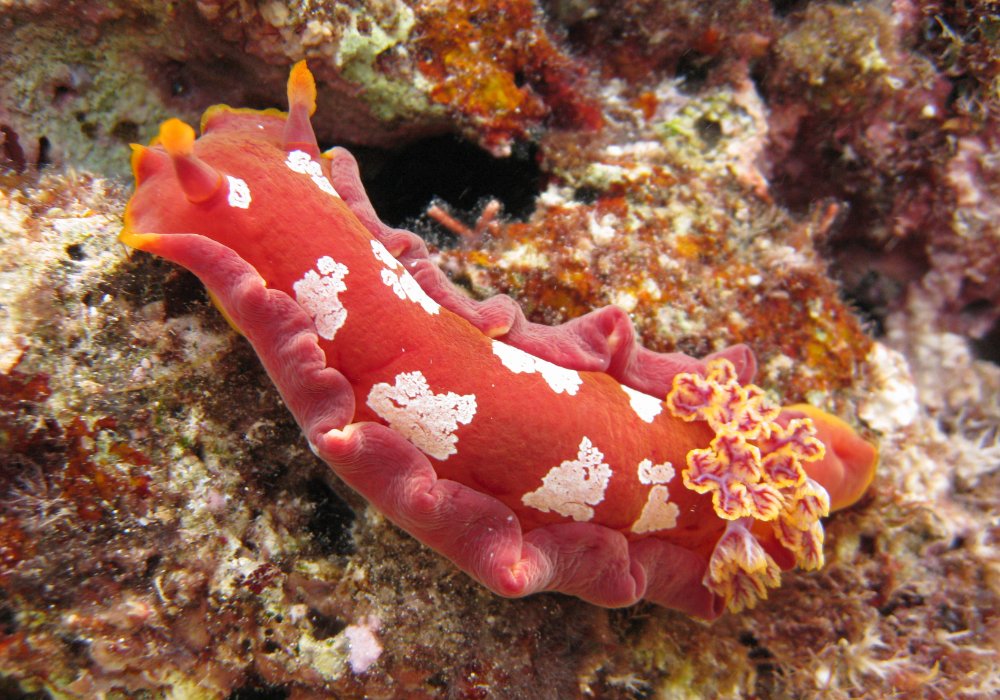
Spanish Dancer
The Spanish dancer is a large and colorful species of sea slug and is renowned for its striking appearance and mesmerizing swimming movements. This sea slug can reach lengths of up to 40 centimeters (16 inches) and features a vibrant red or orange body adorned with intricate patterns and elongated cerata (finger-like projections). Despite lacking a protective shell, the Spanish dancer possesses toxic chemicals that it acquires from the sponges it feeds upon, making it unpalatable to predators. Unlike other sea slugs, the Spanish dancer is capable of swimming through undulating movements of its body and cerata, resembling the graceful movements of a dancer, hence its name. These swimming displays are often observed during nocturnal mating rituals or as a means of escape from predators.
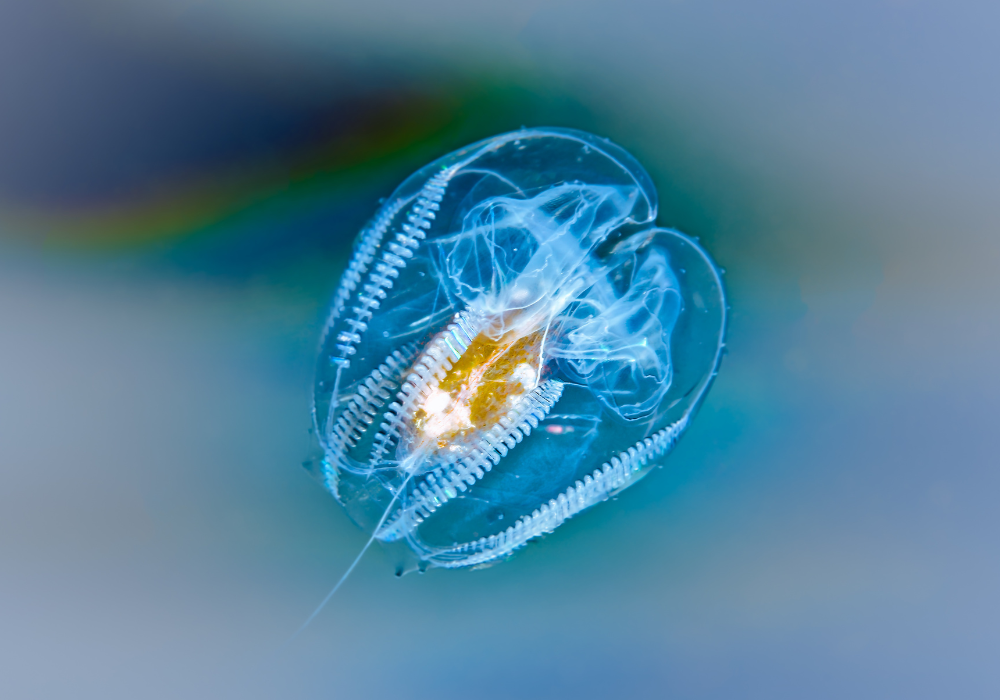
Comb Jellyfish
Combed jellyfish are gelatinous marine animals found in oceans worldwide. They are characterized by their transparent, ctenidial (comb-like) rows of cilia, which they use for locomotion. Combed jellyfish come in various shapes and sizes, ranging from a few millimeters to several centimeters in length. Despite their jelly-like appearance, they are not true jellyfish. These creatures have a simple body structure, consisting of a translucent, gelatinous bell with two long tentacles trailing behind. They are primarily planktonic, drifting with ocean currents, and feeding on small organisms such as plankton and small fish using specialized adhesive cells called colloblasts. Combed jellyfish are bioluminescent, meaning they can produce light through chemical reactions within their bodies. This bioluminescence is thought to be used for communication, attracting prey, and deterring predators.
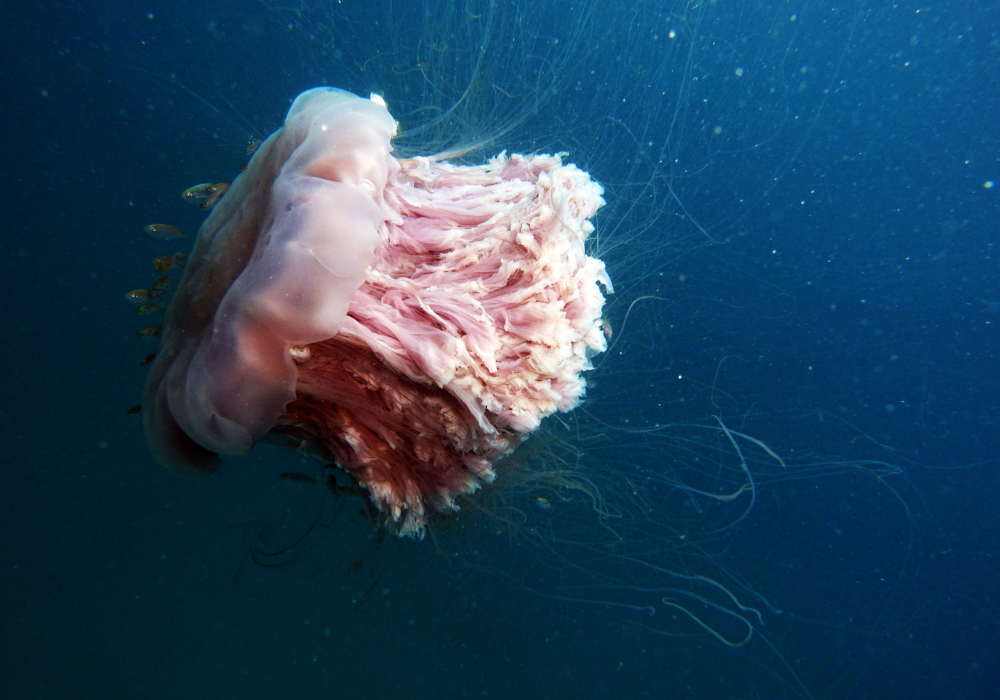
Lion's Mane Jellyfish
The lion's mane jellyfish is one of the largest jellyfish species in the world, known for its impressive size and distinctive appearance. It inhabits cold waters of the Arctic, northern Atlantic, and northern Pacific Oceans. The lion's mane jellyfish has a bell-shaped body that can reach diameters of up to 2 meters (6.6 feet), with long, trailing tentacles that can extend for several meters. Its tentacles are divided into eight clusters, each containing numerous stinging cells called nematocysts, which it uses to capture prey such as fish and plankton. The lion's mane jellyfish is named for its dense mass of tentacles, which resemble a lion's mane. These tentacles can deliver a painful sting to humans, although the severity of the sting varies depending on the individual and the location of the contact. Despite its sting, the lion's mane jellyfish is an important part of marine ecosystems, serving as both predator and prey to various marine organisms.
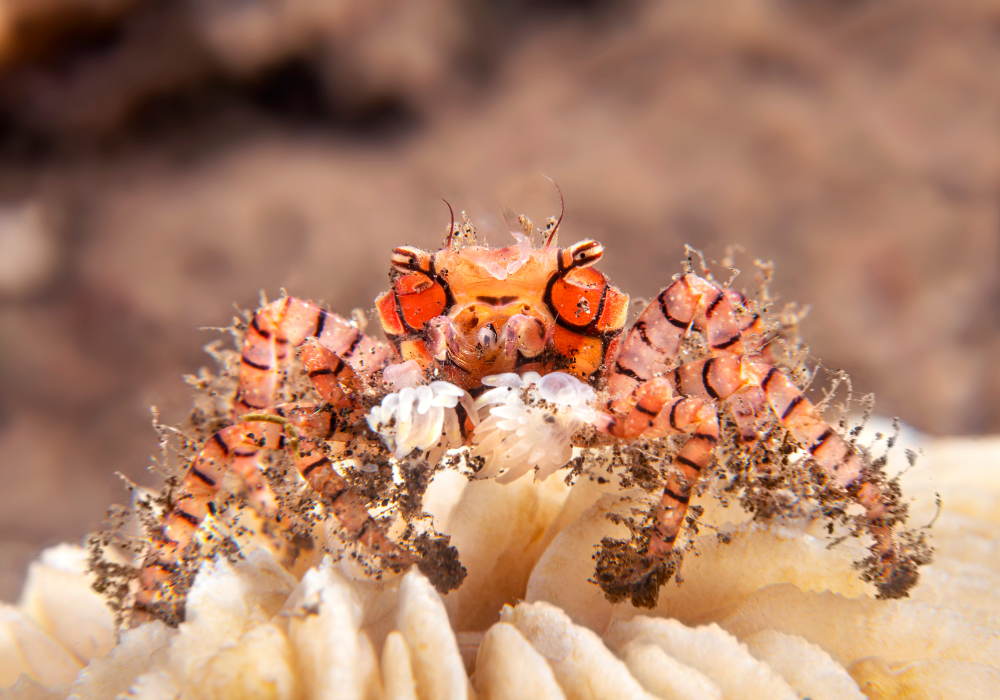
Boxer Crab
The boxer crab, also known as the pom-pom crab or cheerleader crab, is a small species of crab that is characterized by its unique behavior of carrying sea anemones, often of the species Lybia edmondsoni, in each of its claws. These sea anemones resemble pom-poms, giving the crab its common name.
Boxer crabs typically inhabit coral reefs and rocky substrates in tropical and subtropical waters worldwide. The symbiotic relationship between the boxer crab and the sea anemones is mutually beneficial: the sea anemones provide the crab with protection from predators with their stinging tentacles, while the crab offers the sea anemones transportation and access to food particles. When threatened, boxer crabs may wave their anemone-adorned claws in a defensive display, resembling a boxer's sparring motion, hence their name. Despite their small size, boxer crabs are fascinating creatures and are popular among marine aquarium enthusiasts for their unique behavior and symbiotic relationship with sea anemones. However, they can be challenging to keep in captivity due to their specialized dietary and environmental needs.

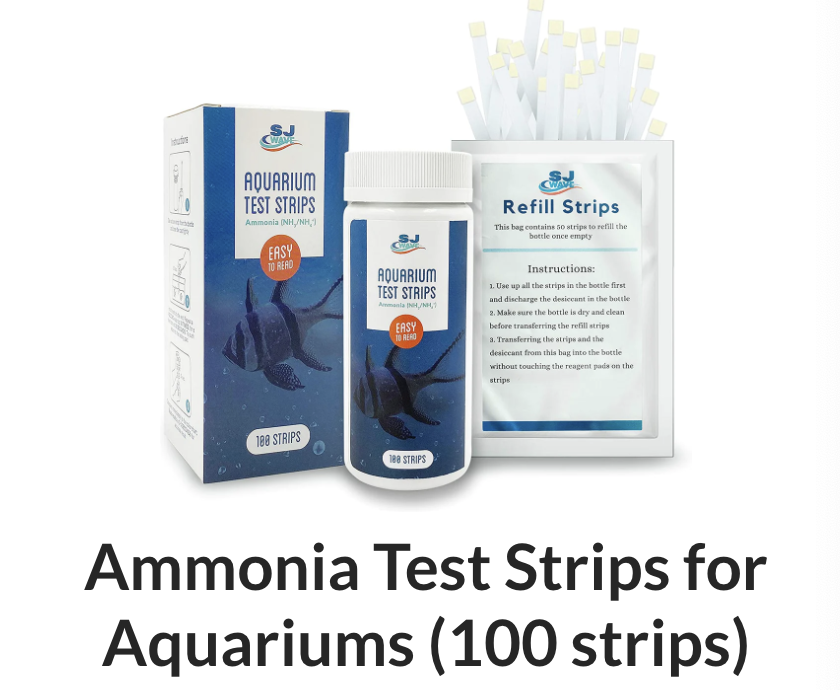
While these fascinating creatures thrive in open waters, some can be kept in aquariums as pets and for breeding. Clean water is essential for the survival and well-being of marine animals as it directly impacts their health, reproduction, and overall ecosystem dynamics. Water quality test kits like SJ Wave 7-in-1 Aquarium Test Strips and SJ Wave Ammonia Test Strips play a crucial role in ensuring the preservation of marine habitats and the prevention of harmful pollution. By monitoring parameters such as pH, dissolved oxygen, salinity, and pollutant levels, scientists can assess the health of aquatic environments and implement necessary measures to maintain suitable conditions for marine life. Thus, rigorous water quality testing serves as a vital tool in protecting marine animals and their habitats, contributing to the sustainability of aquatic ecosystems and the broader health of our planet.

